
What is Vitiligo?
Vitiligo is a skin condition characterized by loss of skin pigment melanin. The loss is not unique so a person ends with white spots and patches of different shape and size. The skin discoloration also affects various parts of the body.
The most prominent skin changes affect the extremities. In the beginning skin depigmentation occurs on small portions of the skin. It, however, spreads affecting more skin. The lesions might be very disturbing and cause aesthetic issues especially because most of them develop on the face, hands and wrists, the exposed parts of the body. Stigmatization these patients are exposed to is blamed for additional mood changes and depression.
The difference between the healthy skin and the one that has lost the pigment is more visible in people with darker skin.
Unfortunately, once the process of depigmentation begins, there is no way to be stopped. Doctors have tried to identify the exact cause of the condition and are still in search for the best possible treatment, the one that might make the difference between the healthy skin less noticeable and even prevent or slow further progression of depigmentation.
In the United States vitiligo affects approximately 1-2 million people. Around half of these individuals are children and adolescents.
Perhaps the only only positive thing about vitiligo is that it is not dangerous i.e. it cannot trigger cancer, is not infective and associated with any additional health issues apart from the very depigmentation.
As far as treatment for vitiligo is concerned, currently there are several treatment options that might help a bit but in fact cannot do much against progressive loss of skin pigment. While some treatment options might work for some affected individuals these are completely ineffective in others.
First of all, patients suffering from vitiligo are supposed to use sunscreen. It protects from harmful sun rays and prevents skin cancer. What is more by using sunscreen on a regular basis, the healthy skin will not become darker. Now, since vitiligo spots cannot ten, if the rest of the skin becomes darker, these will become more visible.
Secondly, there are many over-the-counter concealers such patients may benefit from. However, prior to using any of these patients are supposed to consult their health care provider.
Finally, more aggressive treatment approach comprises corticosteroids or photochemotherapy in the combination with ultraviolet A light (PUVA). There is also a less aggressive approach known as narrow-band ultraviolet B therapy. It is quite similar to PUVA but without psoralen involved and with a different type of ultraviolet light.
At the moment medical experts are investigating a so called melanocyte transplant. They try to grow new melanocytes by taking samples of healthy skin. These, new melanocytes would be transplanted back into the affected skin, restoring its color.
How to Parent a Child with Vitiligo?
Each and every parent is always worried when his/her child is suffering from some medical condition. This also refers to vitiligo.
It is essential to teach the child to accept the condition and live with it. This acceptance starts from early age. However, there are slight differences to the approach when child's age is concerned.
Children under the age of 4 are usually not aware of their skin changes. Only if other kids mock them they might become more interested in vitiligo. Still, many times they simply ignore both the disease and name-calling (if there is any).
The situation is a bit different for the child in the elementary school. The major support in these years remains in the family but there is also a need for the person to expand experiences regarding the social world he/she is in, start spending more time with school friends and building healthy relationships. The peer group plays a major role in the social life of the child and any rejection, especially the one associated with the child's disease, might have detrimental effects. Most children suffering from vitiligo may reduce the peer rejection over time if they act friendly or are amusing in nature. Initially, the child may experience a few unpleasant incidents but is soon accepted by the majority if not all his/her peers.
During elementary school parents can be very supportive and help the child overcome certain issues. For instance, they should prepare the child for some situations that might arise. Also, if the child goes through a mocking period parents are supposed to be show even more love and affection, be sympathetic and give their best to help the child cope with the issue. It is also important to inform teachers about the condition and prevent any prejudice. Teachers will then also be able to help a child when teasing and cruelty occur. And finally, the parents should find alternative ways of stimulating the child to read, write and perform all the school tasks because the very condition may make them lose interest in school in general.
The period when the person suffering from vitiligo can have the hardest times dealing with the acceptance of the nearby people is puberty. This is the period when most people feel insecure abut their flaws such as 'big' nose or flat chest. Puberty places an even greater burden. Support from parents and teachers is of utmost importance during this period of life. Self-confidence is boosted with accomplishments, for instance. As years go by the adolescent seems to deal better with the condition. They learn how to live with it and simply reject any prejudice they come across.
All in all, it is challenging to go through hard times regarding vitiligo over and over again which occurs when the affected children grow and change schools and environment in which they spend most of their time. But with plenty of support form their parents, teachers and eventually friend they can easily neglect the fact that their skin does not match the skin of their peers and that such distinction really does not make any difference.
- www.nhs.uk/conditions/vitiligo/
- www.nhs.uk/conditions/vitiligo/treatment/
- Photo courtesy of James Heilman, MD by Wikimedia Commons: commons.wikimedia.org/wiki/File:Vitiligo1.JPG



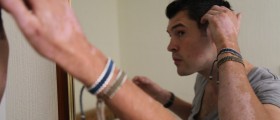
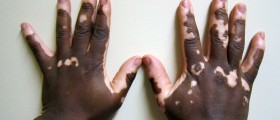
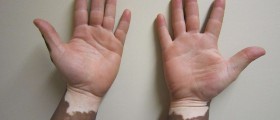






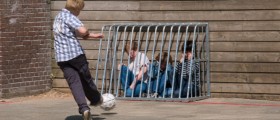
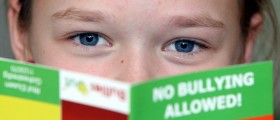



Your thoughts on this
Loading...